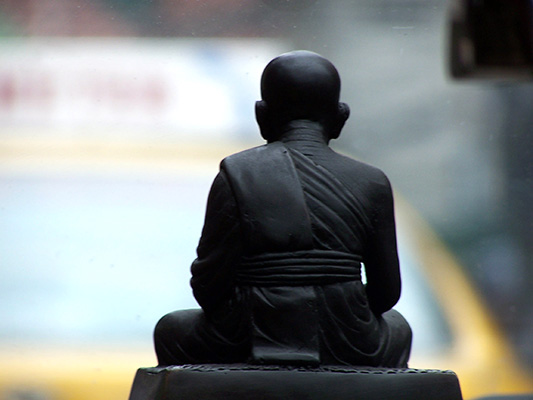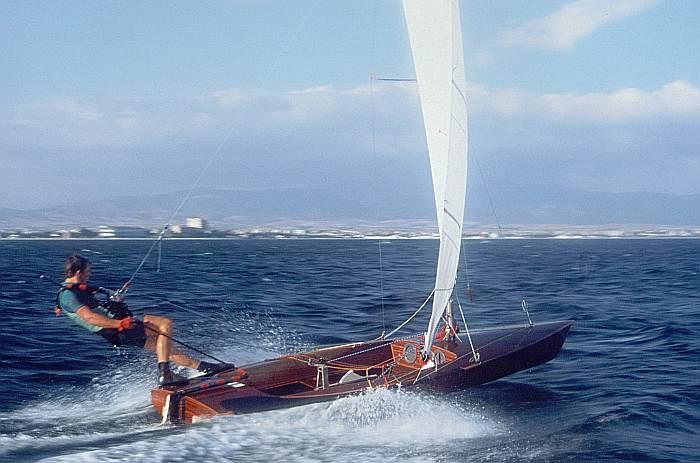Archive for June, 2013
Changing Your Behavior Is Hard
 Changing your behavior is hard. Often, just wanting to change is insufficient, especially for change that runs deep. For deep change, on its own the want doesn’t cut it. What’s required is a powerful why. Why do you want to change? What’s your motivation?
Changing your behavior is hard. Often, just wanting to change is insufficient, especially for change that runs deep. For deep change, on its own the want doesn’t cut it. What’s required is a powerful why. Why do you want to change? What’s your motivation?
But all whys are not created equal with some motivations more powerful than others. Is your motivation all about you, about your family, or society as a whole? The less it’s about you the greater its hold. Clarity on why is vital because it brings staying power.
A meaningful why can help maintain much needed determination as you push away from your as-is self. And determination is crucial because saying no to your previous behavior is exceptionally difficult because it demands full acknowledgement of your true self. In an unhealthy way, changing your behavior can be thought of as an admission – in the form of actions – that your behavior has not been up to snuff. But that’s not it. Changing your behavior is an admission you value yourself enough to face a self-imposed desire to bring more goodness; you value your family enough to bring them happiness, and you value life itself enough to reduce its suffering. It’s not about fixing something that’s broken; it’s about bringing more goodness and light.
Changing your behavior is no small thing, and to make it lasting requires deep grounding. To work through distractions; to hold onto the courage; to continually add the energy all require a strangle hold on what’s truly important. So I ask you know – what’s truly important?
You can fake it for a while, but in the end, because your motivation is not grounded, you’ll revert to your previous self. And I think this is worse than simply maintaining yourself as-is. You spend precious energy forcing the behavior because there’s no grounded motivation. Also, you set expectations that the temporary new behavior is now the standard, and when you revert expectations must be reset.
Here’s a proposal: Start small – latch on to a small why and create a small change. Feel what it feels like and own it. Use your new positivity to springboard to a bigger why and a bigger change and make that one stick. Next, stand on the shoulders of the goodness to reach for a bigger, broader why and a bigger, broader change. Then, repeat.
On Being Well Rested
 All business processes are powered by people. Even with all our automation and standardization, nothing moves without people. And people are powered by language. Language is important.
All business processes are powered by people. Even with all our automation and standardization, nothing moves without people. And people are powered by language. Language is important.
“Fix that so we don’t make any more mistakes.” Snarl words. “Figure out what we do well, and let’s do more of that.” Purr words. Which are more powerful?
“Wonderful work.” Purr words. “Wonderful, more customer complaints.” Snarl words. The same word is both, but it’s clear to all which is which. One is empowering, the other demotivating. Which is better for business?
Subtle usage makes a difference, intonation makes a difference, and tone makes a difference. It’s not just words that matter, but how they’re delivered also matters. Words can build or words can dismantle, and so can delivery.
We know people drive everything. And we know words influence people. Yet we don’t use words in ways that respects their gravity.
It takes care to use the right words in the right ways, and it takes thoughtfulness. But with today’s race pace, it’s tough to be well rested which makes it tough to use care and forethought. Well rested shouldn’t be a luxury and shouldn’t be scoffed at. In an instant the wrong words at the wrong time can be catastrophic. Trouble is the value of being well rested cannot be quantified on the balance sheet.
People power processes and words power people, and the right words at the right time can make all the difference. But it takes thoughtful, enlightened people to deliver them. And for that, they should be well rested.
The Illusion of Control
 When things don’t go as planned, you have a choice – look outside or look inside. Looking outside is about control and looking inside is about lack of control.
When things don’t go as planned, you have a choice – look outside or look inside. Looking outside is about control and looking inside is about lack of control.
When you look outside, what you’re saying is the universe didn’t behave per the plan, and you’re going to teach it a lesson. You’re going to tighten the screws until it does what you want; you’re going to add personal energy (probably all your energy) to lock things down; you’re going to control what must be controlled so the universe follows your plan.
The look outside approach can work, for a while. You can put your fingers and toes in all the holes; you can make sure everyone does their job; and you can be the master scheduler for the universe, but only for a while because the universe has limitless energy and you don’t. And while your control-the-world strategy looks like it’s working, it’s not – not even in the short term. The universe is playing you – it’s sucking your energy while you tread water. The universe isn’t stupid – it knows you can’t last. But at its core, the universe likes to teach; and when you fight it head-to-head, it wants to teach you about opportunity cost. While you spend all your energy wresting it to a draw, it prevents you from moving forward. It wants you to learn you have finite energy and to be thoughtful about how you spend it.
When you look inside, what you’re saying is the universe didn’t behave per the plan, and didn’t think it would. You’re going to learn from the universe and work with it; you’re going to surf the wave of the universe’s energy and carve a cross product with its momentum; you’re going to adjust your plan because you have a lack of control over the universe and most other things.
The look inside approach is effective in the long term because it works with the natural trade winds of the universe. Sailing downwind takes far less energy than tacking into the teeth of the cosmic winds, and it’s faster. This is the lesson the universe wants you to learn. But it’s not that easy. The universe constantly tests you. It changes wind direction without our consent and watches. Will you look outside or inside? Will you tack into the wind or change course and throw a huge bow wave as you go?
The toughest part isn’t the wind; it’s the other sailors. They’ve been trained over the years to tack quickly and tack often, to sail directly toward the destination regardless of the wind, even if they must grab the oars and break their backs into the wind. For those sailors, a course change is a sign of weakness – real sailors battle the wind; real sailors stay the course even if the great circle route is faster.
Thing is, plans never happen as planned, and yours is no different. Yes, control things that can be controlled, but remember – the uncontrollable can’t be controlled just because you want them to be. The universe has been around a long time and knows the ropes. It knows you don’t have control over it; it knows you only have control over how you respond to it.
When you work hand-in-hand with the universe, it rewards you, though it does so obliquely. So if your winds suddenly change and you have to sail away from your grand destination, don’t despair – that’s the universe rewarding good behavior. Double the watch and scan the horizon for the uncharted island with far more treasure than you thought possible. The universe calls that karma.
Image courtesy of YachtPals.com
Seeking Comfort in Discomfort
 There’s a natural desire to create comfort because, well, it’s comfortable. The parents of comfort are sameness and familiarity. To be comfortable we naturally seek out familiarity, and since we’re most familiar with what we did last time, we naturally want to repeat the past. Because we’re familiar with it and because the familiarity makes us comfortable, there’s natural gravitational pull toward the past. Same goes for sameness – it’s comfortable so we seek it out. That’s why there’s so much momentum around what we did last time – familiarity and sameness create comfort and comfort feels comfortable.
There’s a natural desire to create comfort because, well, it’s comfortable. The parents of comfort are sameness and familiarity. To be comfortable we naturally seek out familiarity, and since we’re most familiar with what we did last time, we naturally want to repeat the past. Because we’re familiar with it and because the familiarity makes us comfortable, there’s natural gravitational pull toward the past. Same goes for sameness – it’s comfortable so we seek it out. That’s why there’s so much momentum around what we did last time – familiarity and sameness create comfort and comfort feels comfortable.
And there’s a second level of intellectual inertia created by our desire for comfort. Yes, the parents are the same – sameness and familiarity – but this level of comfort is about comfort with what we have. Whatever success we’ve had, we want to hold onto it so we can feel comfortable. It’s the success we know, it’s what we’re familiar with, and we want sameness around success.
Level one is about comfort around our behavior and level two is about comfort around outcomes of our behavior. We do what we did last time because we know how to do it and we extrapolate – because we did it well last time we’ll do it well this time. We do what we did last time because it worked and we extrapolate – because it worked last time it will work well again. And when the past is repeated, we’ll be comfortable.
This is a fine way to go if things are static – when the rules of the past are the same in the future. But the wheels fall off when things are dynamic – extrapolation doesn’t work when the rules change,and surely we live in dynamic times. If there’s one thing we should be uncomfortable with it’s seeking comfort in familiarity and sameness.
Just as comfort fosters sameness, discomfort drives disruption.
No doubt the future’s rules will be different, and discomfort will be the forcing function. Discomfort with the status quo will propel upstarts to innovate and break rules. For them familiarity and sameness are uncomfortable, and since they too are human, they will seek out comfort. But they will find it in unfamiliarity and difference. They will be comfortable when they disrupt the game, dethrone the leaders, and coronate themselves.
Whether you’re the leader or the start-up, increase your level of discomfort. The leader can create pockets of discomfort (financed by comfort-based success) to break the rules on their own terms and obsolete their best stuff on their own timeline. And the already uncomfortable start-up can add more to harden itself for the tough times ahead.
Maximizing comfort does not maximize business success. There is little learning without discomfort and there is no adaptation without it. If you’re feeling comfortable, that’s the telltale sign you shouldn’t.
 Mike Shipulski
Mike Shipulski